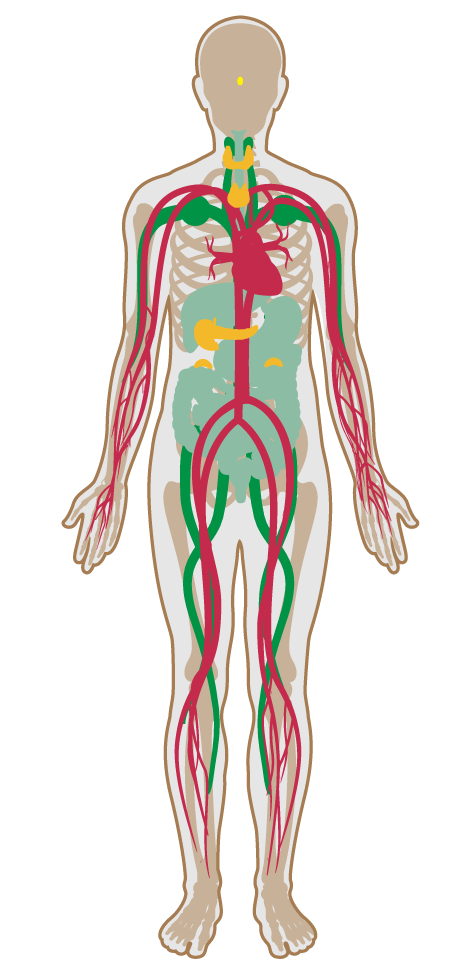Food advertising
- 38 Fruits and vegetables
- 39 Processed foods
- 40 Food allergies
- 41 Hand washing
- 42 Food contamination
- 43 Artificial ingredients
- 44 Nutritional information
- 45 Food advertising
- 46 Safe food preparation materials
- 47 Serving sizes
- 48 Special diets
- 49 Responsible food production
- 50 Food storage
- 51 Food production
- 52 Mindful eating
- P1 Food environment
- P7 Strategic Dining Design
45. Food advertising
To promote healthy food consumption choices.
Every year, food companies spend billions of dollars marketing and advertising unhealthy foods to children and adults, contributing to the creation of an obesogenic (obesity-promoting) environment. Over a billion dollars are spent annually on marketing breakfast cereals, carbonated beverages and restaurant food to youth alone. However, access to nutrition information can help individuals learn about and develop better eating habits. Further, limiting advertising cues for unhealthy foods can help individuals make better food selections and mitigate suboptimal nutritional choices.
The following requirement is met:
Using prominent displays such as educational posters, brochures or other visual media, designated eating areas or common areas contain a total of at least 3 instances of messaging intended to achieve each of the following requirements:
The following requirements are met for point-of-decision prompts to promote healthier eating decisions:
Menus and menu boards are designed to meet at least two of the following requirements:

Applicability Matrix
| Core & Shell | New & Existing Buildings | New & Existing Interiors | |
|---|---|---|---|
| Part 1: Advertising and Environmental Cues | O | P | P |
| Part 2: Nutritional Messaging | O | P | P |
| Commercial Kitchen | Education | Multifamily Residential | Restaurant | Retail | |
|---|---|---|---|---|---|
| Part 1: Advertising and Environmental Cues | P | P | O | P | - |
| Part 2: Nutritional Messaging | - | P | O | P | - |
| Part 3: Healthy Choices Promotion | - | P | - | - | - |
| Part 4: Healthy Menu Design | - | - | - | P | - |
Verification Methods Matrix
| Letters of Assurance | Annotated Documents | On-Site Checks | |
|---|---|---|---|
|
PART 1 (Protocol) Advertising and Environmental Cues |
Visual Inspection | ||
|
PART 2 (Protocol) Nutritional Messaging |
Visual Inspection | ||
|
PART 3 (Design) Healthy Choices Promotion |
Visual Inspection | ||
|
PART 4 (Design) Healthy Menu Design |
Visual Inspection |
| 45.1.a |
The U.S. Department of Agriculture's Dietary Guidelines for Americans identifies that nutrition and physical activity decisions are influenced by marketing and media. |
| 45.2.a |
The U.S. Department of Agriculture's Dietary Guidelines for Americans identifies that nutrition and physical activity decisions are influenced by marketing and media. |
| 45.2.b |
The U.S. Department of Agriculture's Dietary Guidelines for Americans identifies that nutrition and physical activity decisions are influenced by marketing and media. |
| 45.3.a |
The Healthy Eating Design Guidelines outline the provision of menu signage at the entry to the dining area as a strategy for reinforcing healthy eating messages. |
| 45.3.b |
The Healthy Eating Design Guidelines outline the provision of menu signage at food serving areas as a strategy for reinforcing healthy eating messages. |
| 45.4.a |
Slim by Design notes that descriptive words for healthy menu options sell more of that item. |
| 45.4.b |
Slim by Design discusses how the design of a menu could help guide the viewer's eye to healthier items, such as through the use of text styling differences that catch the eye including bold type or icons. |
| 45.4.c |
Slim by Design notes to list healthier items first under menu sections. |
| 45.4.d |
Slim by Design discusses how menu the design of a menu could help guide the viewer's eye to healthier items, and notes that typically menus are read in a Z-shaped pattern, starting at the top left. |
